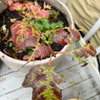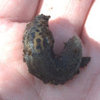How to get rid of English ivy
misslisamham
11 years ago
Related Stories

GROUND COVERSNative Alternatives to English Ivy, Japanese Pachysandra and Periwinkle
These shade-loving ground covers are good for the environment and say something about where you are
Full Story
EDIBLE GARDENSNatural Ways to Get Rid of Weeds in Your Garden
Use these techniques to help prevent the spread of weeds and to learn about your soil
Full Story
DECORATING GUIDES15 Ways to Get the English Cottage Look
Look to nature, inexpensive fabrics and small swaps to conjure a country-house vibe
Full Story
GARDENING GUIDES9 Holly and Ivy Plants for Good Tidings in the Garden
Spread Christmas joy all year round with the gorgeous foliage and bright berries of these evergreen plants
Full Story
HOUZZ TOURSMy Houzz: English Cottage Style Graces a Home Bathed in Light
Starting with a bare lot, a downsizing Illinois couple builds a fitting home that welcomes the sun everywhere you turn
Full Story
GARDENING AND LANDSCAPINGCrab Apple Trees Set Off a Stylish English Courtyard
A structure of pleached crab apple trees, bordered by a wildflower meadow, links a minimalist addition to an old house in Buckinghamshire
Full Story
LANDSCAPE DESIGNGet the Mystery of a Gothic Garden for Yourself
Create an enchanting and tranquil scene with the stonework and wayward plantings of Gothic garden design
Full Story
SAVING WATERXeriscape Gardens: How to Get a Beautiful Landscape With Less Water
Conserve water and make gardening much easier with the xeriscape approach’s 7 principles
Full Story
ORGANIZING7-Day Plan: Get a Spotless, Beautifully Organized Kitchen
Our weeklong plan will help you get your kitchen spick-and-span from top to bottom
Full StoryMore Discussions










Kimmsr
Tiffany, purpleinopp Z8b Opp, AL
Related Professionals
Fort Lee Landscape Architects & Landscape Designers · Graham Landscape Architects & Landscape Designers · Bristol Landscape Contractors · Byram Landscape Contractors · Canton Landscape Contractors · Fairview Landscape Contractors · Holtsville Landscape Contractors · Lady Lake Landscape Contractors · Long Branch Landscape Contractors · Plainview Landscape Contractors · San Pedro Landscape Contractors · Westford Landscape Contractors · Wilton Landscape Contractors · 07920 Landscape Contractors · Irvington Landscape Contractorsgvozdika